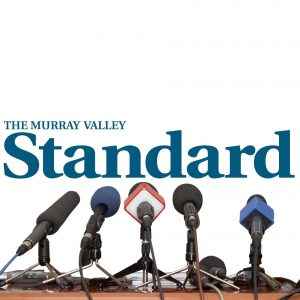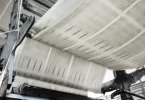The much-loved South Australian bi-weekly the Murray Valley Standard (MVS), one of the oldest locally produced papers and one that has won numerous awards from the Country Press Australia, stopped printing after 86 years of service, after Australian Community media announced the shutdown of four major printing sites in mid-April as a result of CoVID-19.
In 1934, when he established the newspaper, MVS owner Maurice Parish wrote he intended to provide a voice to the local community and wanted them to regard MVS as their paper, to “mirror” the concerns and opinions of the Murray People.

(Featured Image: The Murray Valley Standard temporarily shut after 86 years of service. The Murray Valley Standard Facebook)
Murray Bridge Lions Club secretary, Dot Temby says the MVS, not only provides a public service to the community of Murraylands and Murray Bridge, but also the four other regional towns it reaches.
“It’s been really disappointing to see the paper go during this time, especially when some of the elderly readers don’t have access to the news online,” she said.
“It’s not only affected the community here, but the paper also has a strong readership in Mannum, Tailem Bend, Meningie and Karoonda.”
She says the community had noted that a few of the workers at the news outlet were still running the Facebook page to keep the paper alive.
“Some of the journalists at the paper are working out of pocket just to keep their (MVS’s) Facebook page running, which I appreciate, however they shouldn’t be expected to do that,” she said.
“There needs to be more support shown by media companies during the pandemic.”
ACM was not available for comment.
Your friendly neighbourhood journalist

(Featured Image: Murray Bridge News managing editor Peri Strathearn, launches his online news service. KEREN STRATHEAN)
FOne of MVS’s journalists, Peri Strathearn said he was not about to let the suspension of print to stop him from working
After he and 100 other staff were stood down on April 14, Strathearn used this opportunity to start a web service- Murray Bridge News.
He says he’s wanted to start the Murray Bridge News for years and his extensive training in regional and local media, made the launch of his online news publication possible.
“It’s something I’d been contemplating for the past couple of years, having studied industry trends and reading anything I could find about the future of local and regional media,” he said.
“If I hadn’t done that groundwork already, I would never have been able to launch so quickly,
“Larger media companies seem to struggle to change their business models, there comes to a point when starting afresh makes more sense.”
After launching Murray Bridge News on April 23, the Facebook page has already accumulated more than 1,000 followers and Strathearn finds the increasing support of the community “overwhelming”.
But providing news to the local community goes beyond the paycheck for Strathearn as he enforces that journalism is “not just a job”, but an essential service needed especially during the public health crisis.
“I’m bound by a duty to my community to tell people what’s happening, share opportunities, watch authorities and all the rest of it,” he said.
“And that need doesn’t change just because the print advertising market is dead at the moment as I believe journalism is an essential service, especially during the public health emergency we’re currently enduring.”
Strathearn says understands the frustration of the community with MVS, as ACM never issued a statement telling readers of the shutdown.
“There was never any formal announcement from (the) Australian Community Media or The Standard to readers or even to newsagents,” he said.
“There was never a flashpoint or an opportunity for people to take out their frustration.”
Strathearn was aware that regional papers were promised support from the 4.7-million-dollar package supplied by the Andrews Government in late April, but he wondered if this would only postpone the death of print newspapers which had been a downward spiral since the arrival of the internet in the 1990s
“The survival of regional news is vital, but will grants allow the incumbents to turn things around, or will it just delay the inevitable?”
Regional papers go beyond public interest journalism
Professor of Digital Media at RMIT University, Lisa Waller, worked in print media for 20 years and says rural towns do not view the move to digital news as “desirable”, compared to globalised news in urban areas.
“The print product remains important, that’s a really big difference to the metropolitan situation.”
She says public-interest journalism is important, but the function of regional news media goes beyond that, as it enables people in these communities to remain visible and connected.
“As people studying journalism, looking at journalism, we get caught up in the normative function of news,” she said.
“We have this idea of the democratic function of news. For regional towns, the paper reflects who we are as a society and what we stand for.”
Professor Waller says that regional news serves as an identity for many of these towns, that it’s not just “courts and council”, but instead strives to reflect views and values of the community.
She says the purpose of regional print media is often lost, and people can forget why people are tied to these newspapers. The content in regional print is not limited by the idea of democracy and the public interest.
“Using the journalist approach, we sometimes miss what the paper means to people.”







